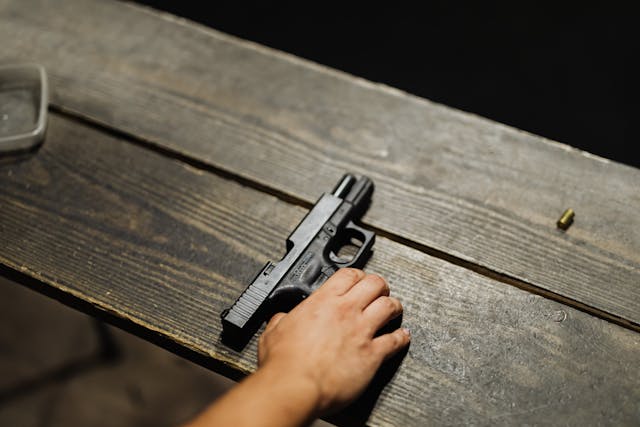Prohibited Use of a Weapon and Menacing are similar guns charges in Loveland and Fort Collins. There are certain subsections that align in the elements required to charge either Prohibited Use of Weapons or Menacing. Let’s take a closer look at these two criminal charges.
Larimer County Prohibited Use of Weapons Attorney: Colorado Definition of Prohibited Use of a Weapon
The Larimer County, Colorado law definition of Prohibited Use of Weapons – C.R.S. 18-12-106 – is:
(a) He knowingly and unlawfully aims a firearm at another person; or
(b) Recklessly or with criminal negligence he discharges a firearm or shoots a bow and arrow; or
(c) He knowingly sets a loaded gun, trap, or device designed to cause an explosion upon being tripped or approached, and leaves it unattended by a competent person immediately present; or
(d) The person has in his or her possession a firearm while the person is under the influence of intoxicating liquor or of a controlled substance, as defined in section 18-18-102 (5). Possession of a permit issued under section 18-12-105.1, as it existed prior to its repeal, or possession of a permit or a temporary emergency permit issued pursuant to part 2 of this article is no defense to a violation of this subsection (1).
Prohibited Use of a Weapon charge is a class 1 misdemeanor in Fort Collins and Loveland. This level misdemeanor is punishable by up to 364 days in the Larimer County Jail.
Attorney for Menacing Charges in Fort Collins: Definition of Menacing in Colorado
The Colorado law definition of Menacing – C.R.S. 18-3-206 – is:
The penalty for class 5 felony Menacing is 1 to 3 years in the Colorado Department of Corrections.
What is the Difference Between Prohibited Use of a Weapon and Menacing in Larimer County?
The biggest difference between these two charges is fear. For Prohibited Use of Weapons, the person is aiming a firearm at another person. Menacing can also include aiming a gun (or even just showing a firearm) at another person and PUTTING THE PERSON IN FEAR OF SERIOUS BODILY INJURY. It really puts the other person in the driver’s seat whether you end up charged with a misdemeanor or felony.
